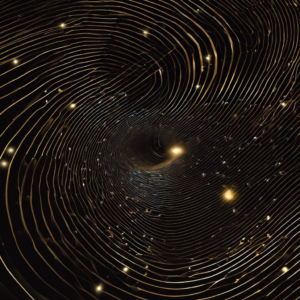
In September 2015, the scientific community was electrified by an announcement that marked a milestone in human understanding of the universe: the detection of gravitational waves. This groundbreaking discovery, made by the Laser Interferometer Gravitational-Wave Observatory (LIGO), confirmed one of the most profound predictions of Albert Einstein’s theory of general relativity. It was a momentous occasion that opened a new era of astronomy and cosmology, offering scientists a powerful tool to explore the mysteries of the cosmos.
Gravitational waves are ripples in the fabric of spacetime itself, generated by the acceleration of massive objects. According to Einstein’s theory, massive objects like stars and black holes distort the fabric of spacetime around them. When these objects undergo rapid acceleration or movement, they create ripples in spacetime, akin to the waves formed when a stone is dropped into a still pond. However, unlike water waves, gravitational waves propagate through the universe at the speed of light, carrying information about their violent cosmic origins.
Einstein first predicted the existence of gravitational waves in 1916 as a consequence of his theory of general relativity. However, detecting these waves remained a formidable challenge for scientists due to their incredibly weak nature. Gravitational waves cause minuscule distortions in spacetime, making them exceedingly difficult to detect, even with the most sophisticated instruments.
The quest to detect gravitational waves spanned decades, with scientists developing increasingly sensitive techniques and technologies to capture these elusive signals. The culmination of this effort came with the construction of LIGO, a groundbreaking observatory designed to detect gravitational waves by measuring the tiny displacements they induce in laser beams.
LIGO consists of two identical detectors located in Livingston, Louisiana, and Hanford, Washington. Each detector features a pair of perpendicular arms, several kilometers in length, equipped with mirrors at their ends. Laser beams are split and sent down each arm, where they bounce off the mirrors and return to a central detector. By precisely measuring the interference patterns between the returning laser beams, LIGO can detect the subtle length changes caused by passing gravitational waves.
On September 14, 2015, at 5:51 a.m. Eastern Daylight Time, LIGO made history by capturing the telltale signature of a passing gravitational wave. This wave, produced by the merger of two black holes over a billion light-years away, caused tiny fluctuations in spacetime that were detected by both LIGO observatories. The event, dubbed GW150914, marked the first direct observation of gravitational waves and provided compelling evidence for the existence of binary black hole systems.
The detection of GW150914 was a triumph of scientific ingenuity and collaboration. It validated Einstein’s century-old theory of general relativity in a regime where it had never been tested before, opening a new window onto the universe’s most extreme phenomena.
Since the historic detection in 2015, LIGO and its European counterpart, Virgo, have continued to make groundbreaking discoveries, detecting dozens of additional gravitational wave events. These detections have revealed the existence of binary neutron star mergers, offering unprecedented insights into the nature of these exotic objects and the processes that govern their evolution.
One of the most remarkable achievements of gravitational wave astronomy came in August 2017 when LIGO and Virgo detected the gravitational waves and electromagnetic radiation produced by the merger of two neutron stars. This event, known as GW170817, marked the first time that both gravitational waves and light emissions from the same cosmic event were observed simultaneously. The coordinated observations provided astronomers with a wealth of information about the nature of neutron stars, the origin of heavy elements in the universe, and the nature of gravitational waves themselves.
The discovery of gravitational waves has transformed our understanding of the universe, ushering in a new era of multi-messenger astronomy where gravitational waves, light, and other forms of radiation work together to paint a comprehensive picture of cosmic events. It has enabled scientists to probe the most extreme environments in the universe, from the hearts of black holes to the violent collisions of neutron stars, offering insights into the fundamental laws that govern the cosmos.
Looking ahead, gravitational wave astronomy holds the promise of even greater discoveries. With ongoing improvements to detector sensitivity and the development of new observatories, scientists aim to unlock the secrets of the universe’s earliest moments, explore the dynamics of black hole populations, and unravel the mysteries of dark matter and dark energy.
The discovery of gravitational waves represents a triumph of human curiosity and ingenuity, confirming Einstein’s revolutionary insights into the nature of spacetime and opening a new chapter in our exploration of the cosmos. As we continue to listen to the whispers of the universe, gravitational wave astronomy promises to reveal the hidden secrets of the cosmos and deepen our understanding of the universe’s wondrous complexity.
